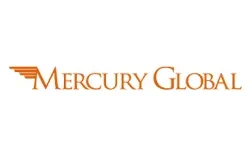
Global Mercury Market Review and Forecast (2019-2034)
The latest research report, titled “Mercury World, Regions, and Countries Market Review 2019-2024 and Forecast to 2034,” has been added to ResearchAndMarkets.com’s collection. This report is an essential resource for stakeholders looking to understand the global mercury market’s past performance, current state, and future outlook. It provides an in-depth analysis of supply and demand trends, production capacities, price movements, trade statistics, and the role of downstream industries.
Comprehensive Analysis of the Mercury Market
The report offers a structured overview of the global mercury market, covering developments at regional and national levels. It contains an extensive collection of tables, charts, and textual explanations, providing valuable insights into the industry. Key aspects of the market, including production, consumption, pricing, trade, and major industry players, are thoroughly examined.
Key Features of the Report:
- Historical Market Overview (2019-2024): Analysis of past trends, market size, production, demand, and trade statistics.
- Current Market Conditions: Evaluation of the present supply-demand balance, pricing trends, and industrial consumption.
- Future Market Outlook (2025-2034): Forecasts for production volumes, demand fluctuations, pricing trends, and upcoming industry developments.
- Regional and National Market Studies: Detailed analysis of mercury market trends across Europe, the Commonwealth of Independent States (CIS), Asia-Pacific, North America, and Latin America.
- Company Profiles: Examination of major mercury manufacturers and their market positioning.
Market Trends and Historical Analysis (2019-2024)

Global Mercury Market Performance
Between 2019 and 2024, the mercury market witnessed fluctuations influenced by regulatory changes, environmental concerns, and demand shifts across various industries. Mercury production remained concentrated in specific regions where natural reserves were available, while international trade dynamics were affected by tightening environmental regulations in several countries.
The demand for mercury was driven primarily by its use in industrial applications, including:
- Chemical manufacturing (chlor-alkali production)
- Electrical and electronic devices
- Artisanal and small-scale gold mining (ASGM)
- Laboratory and scientific research applications
During this period, regulatory interventions, particularly the Minamata Convention on Mercury, impacted the market by encouraging alternative technologies and phasing out in many applications. These restrictions led to reduced production in certain regions, while demand persisted in sectors where viable substitutes were unavailable.
Production and Trade Analysis
The report highlights global production levels and trade patterns, showcasing leading mercury-producing countries and major exporters/importers. production remained concentrated in countries with substantial reserves, while trade dynamics were shaped by supply constraints and increasing regulatory oversight.
Key Production Centers (2019-2024):
- China remained the dominant producer, with significant mining and processing operations.
- Kyrgyzstan and Tajikistan also contributed to global supply, albeit at a smaller scale.
- Mexico and Peru played notable roles in mercury mining in Latin America.
Mercury trade flows reflected the global demand patterns, with exports directed towards regions with high industrial usage. However, increasing restrictions in major consuming markets led to a gradual decline in overall trade volumes.
Pricing Trends
The report also provides a detailed analysis of pricing trends, highlighting factors that influenced price movements between 2019 and 2024. prices were affected by:
- Supply chain disruptions
- Regulatory restrictions
- Fluctuating demand in key industrial sectors
- Market speculation and stockpiling trends
Regional Market Insights
1. European Mercury Market Trends
The European market experienced a decline in usage due to stringent environmental regulations. The implementation of the Minamata Convention led to significant reductions in based industrial applications. However, some demand persisted in niche industries, including research and specialized equipment manufacturing.
2. Commonwealth of Independent States (CIS) Market Overview
The markets in the CIS region, particularly in Kyrgyzstan and Tajikistan, remained active due to domestic mining operations. These countries played a critical role in global production and export, supplying markets where demand remained stable.
3. Asia-Pacific Market Trends
China continued to be the largest producer and consumer of, with its industrial sector driving demand. While regulatory measures were introduced to curb usage in certain applications, the country’s vast industrial base maintained a steady level of consumption.
4. North American Market Trends
The United States saw a decline in demand due to strict environmental policies and industrial shifts towards safer alternatives. However, certain sectors, including scientific research and specialized manufacturing, continued to require based materials.
5. Latin American Market Trends
Countries like Mexico and Peru remained active in production and trade. Mercury continued to be used in small-scale gold mining operations, despite global efforts to limit its environmental impact.
Market Outlook and Forecast (2025-2034)
The report provides a forward-looking analysis of the market, identifying key drivers and challenges that will shape its trajectory over the next decade.
Projected Market Dynamics:
- Production Trends: Mercury production is expected to decline in response to increasing regulatory pressures and efforts to phase out its industrial use. However, some mining operations may continue in regions with existing infrastructure.
- Demand Forecast: The demand for projected to decline in most industrial applications, with notable reductions in the chlor-alkali sector and electronics manufacturing. However, certain industries, such as ASGM and research applications, may continue to exhibit demand.
- Pricing Trends: Mercury prices are expected to fluctuate based on supply constraints, regulatory measures, and global stockpiling activities. As availability decreases, prices may rise in markets where substitutes remain limited.
- Trade and Regulation: International trade in mercury is anticipated to face increasing restrictions, leading to shifts in supply chains and market adjustments.
Key Questions Addressed in the Report
- What were the main trends in the global market between 2019 and 2024?
- How has global mercury production evolved over the past five years?
- What are the major mercury-producing and consuming regions globally?
- Who are the leading players in the market?
- What factors will shape the market between 2025 and 2034?
- What are the projected compound annual growth rates (CAGRs) for supply and demand?
- Are there any new mercury projects expected to be completed in the next decade?
The “Mercury World, Regions, and Countries Market Review 2019-2024 and Forecast to 2034” report offers a comprehensive evaluation of the industry, providing valuable insights for businesses, policymakers, and industry stakeholders. As regulatory frameworks evolve and demand patterns shift, understanding the market’s historical performance and future trajectory will be crucial for strategic decision-making.




